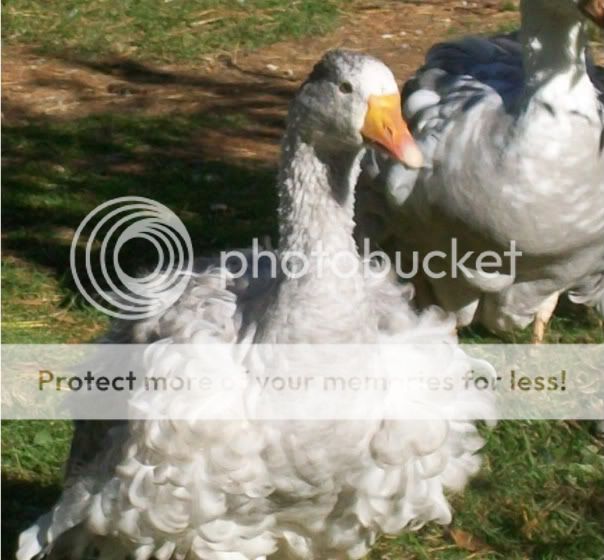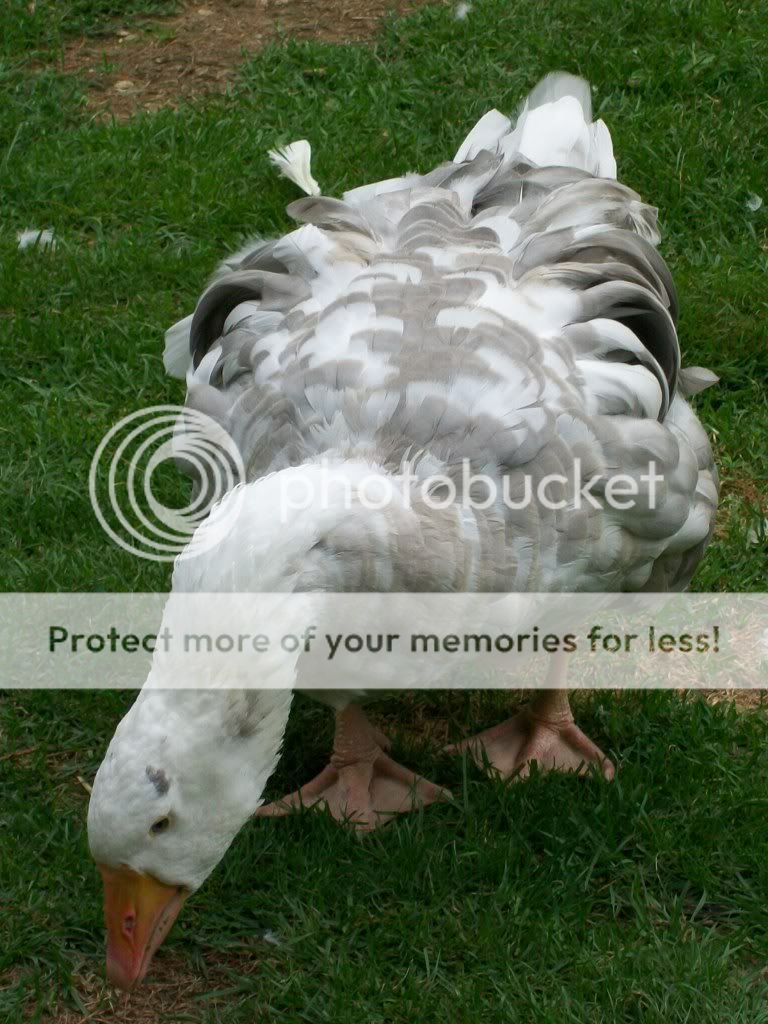If I breed a blue smooth brested sebastopol gander to a gray curley brested goose what should I get? And if I breed that same gander to one of my curley brested whites what should I get?
What type of feed should I be giving my sebastopols? Right now I am giving them a 16% laying mash with some scratch feed on the side (mainly as a treat).
What type of feed should I be giving my sebastopols? Right now I am giving them a 16% laying mash with some scratch feed on the side (mainly as a treat).






